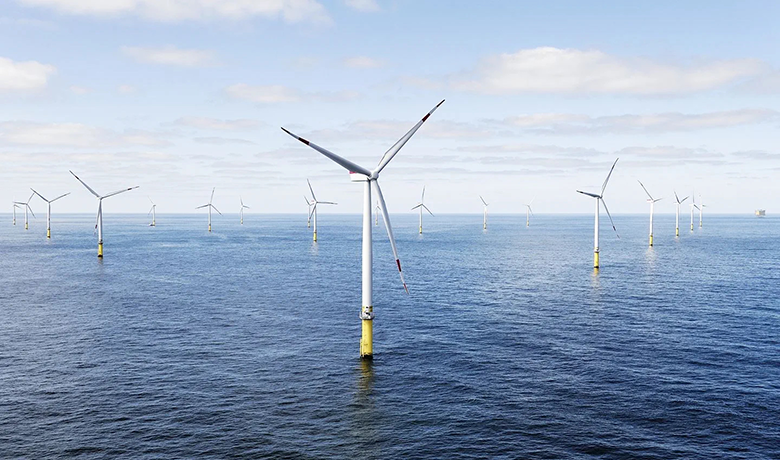

Mariners are in high demand as the labor shortage that has impacted countless shoreside industries has taken hold in the maritime trades.
There are many reasons, including retirements among older mariners that are creating openings faster than companies can fill them. Additionally, the Gulf of Mexico oil patch is heating up again as prices remain high, and the offshore wind industry is threatening to poach mariners looking for better pay or conditions.
Increased demand for workers in transportation, shipping and elsewhere also is driving activity. It amounts to ample job opportunities for job seekers — particularly those with experience. It also means employers are struggling in some cases to find qualified help. Some firms are offering signing bonuses and other perks to bring in fresh talent.
“The industry ebbs and flows as far as employment opportunities are concerned,” said Ed Nanartowich, president of Mid-Atlantic Maritime Academy. “Right now, it is an employment-seeker’s market.”
Opportunities abound
Just how tough is the maritime job market for employers who need to hire workers? It depends on multiple factors, such as the level of experience needed for a given position. Competition for workers is highest among those with more experience and advanced training.
“What we see is that the U.S. maritime job market is very dynamic and challenging for the mariner and employer, with ever-increasing regulatory requirements,” said Randall Rockwood, vice president of Mid-Atlantic Maritime Academy. “Employers are aggressively recruiting all ratings and ranks above entry level. Our school’s bulletin boards are full of opportunities.”
“Just like all industries there is a shortage of workers in the maritime industry,” said Julie Keim, founder of Compass Courses training center in Edmonds, Wash. “It’s become one of our talking points with students.”
Some employers are going out of their way to attract experienced employees. Signing bonuses and retention bonuses, along with other incentives, are becoming more common. And future employment trends suggest the market will stay tight for years to come.
The U.S. Bureau of Labor Statistics projects there will be 8,400 openings for water transportation workers each year, on average, over the next decade. Many of those openings are expected to result from the need to replace workers who move to new industries or retire.
“There is a wave of retirements happening, so there is lots of movement in the maritime job market,” said Lily Ploski, director of career services at California State University Maritime Academy. “Employers are increasing pay and benefits, but they are still having a hard time finding enough employees.”
That dynamic has been particularly acute for Washington State Ferries, the nation’s largest ferry system. Last fall, the ferry system reduced service on numerous routes due to labor shortages, according to published reports.
Recruiting mariners becomes even more difficult as shoreside salaries increase, narrowing the gap between what a worker can earn offshore versus what they can make on land. Plus, some workers are willing to earn less if it means they can go home each night, Nanartowich said.
Anecdotal evidence also suggests Covid-19 vaccine mandates are causing some experienced mariners to leave the profession. However, limited data makes it difficult to know how many maritime companies enacted mandates or the effects of that policy.
Taken together, job openings are plentiful across the industry.
“Applicant hiring has been very consistent both pre- and post-pandemic,” said Matt Godden, president and CEO of Centerline Logistics, a Seattle-based bunkering and petroleum transportation company. “Finding skilled and experienced candidates is challenging but possible. We have not seen large pandemic fluctuations.
“Centerline has been growing, and we’ve added some 100-plus positions over the last two months,” he continued. “We’ve not had issues filling them but have had to work harder than usual to attract talent.”
The types of jobs that are hottest in the industry right now include those involving new construction, dynamic positioning vessels and anything related to the rapidly growing offshore wind sector, said Ray Blanchet, vice president of Mid-American Maritime Academy.
Offshore wind staffing up
The rapidly growing offshore wind sector could put pressure on the maritime job market for years to come. The burgeoning industry will create thousands of new positions over the next decade. Exactly how many, though, will depend on the number of wind projects approved by the government — and how quickly they’re approved. But the Global Wind Energy Council projects the United States will need up to 25,000 workers to build, service and maintain offshore wind installations by 2025.
The U.S. Department of Energy (DOE) projects the number of jobs will be even higher.
“The (DOE) report predicts that during the offshore wind development construction period, there will be a need for 31,300 full-time-equivalent jobs per year,” Blanchet said. “And during the [offshore wind] operating period, there will be a need for 13,400 full-time-equivalent jobs per year for operating and maintenance technicians, management, and supply chain jobs.”
The industry remains most competitive for experienced mariners. It can be less so at the lower end of the industry. But there are still good positions available for would-be mariners.
“There are openings across the board, but anyone willing to learn and grow will find a place in the maritime industry,” Ploski said. “What I am hearing from industry partners is there is no shortage of employers looking to fill positions.”
Industry watchers say the maritime sector is expanding, and that over the next year, there will be a growing need for more employees. Work is available for those workers who are properly trained and prepared to get on the job.
“The industry is continuing to expand,” Ploski said, “and college graduates with credentials and a license will continue to have clear sailing and smooth seas for the time being.” •
